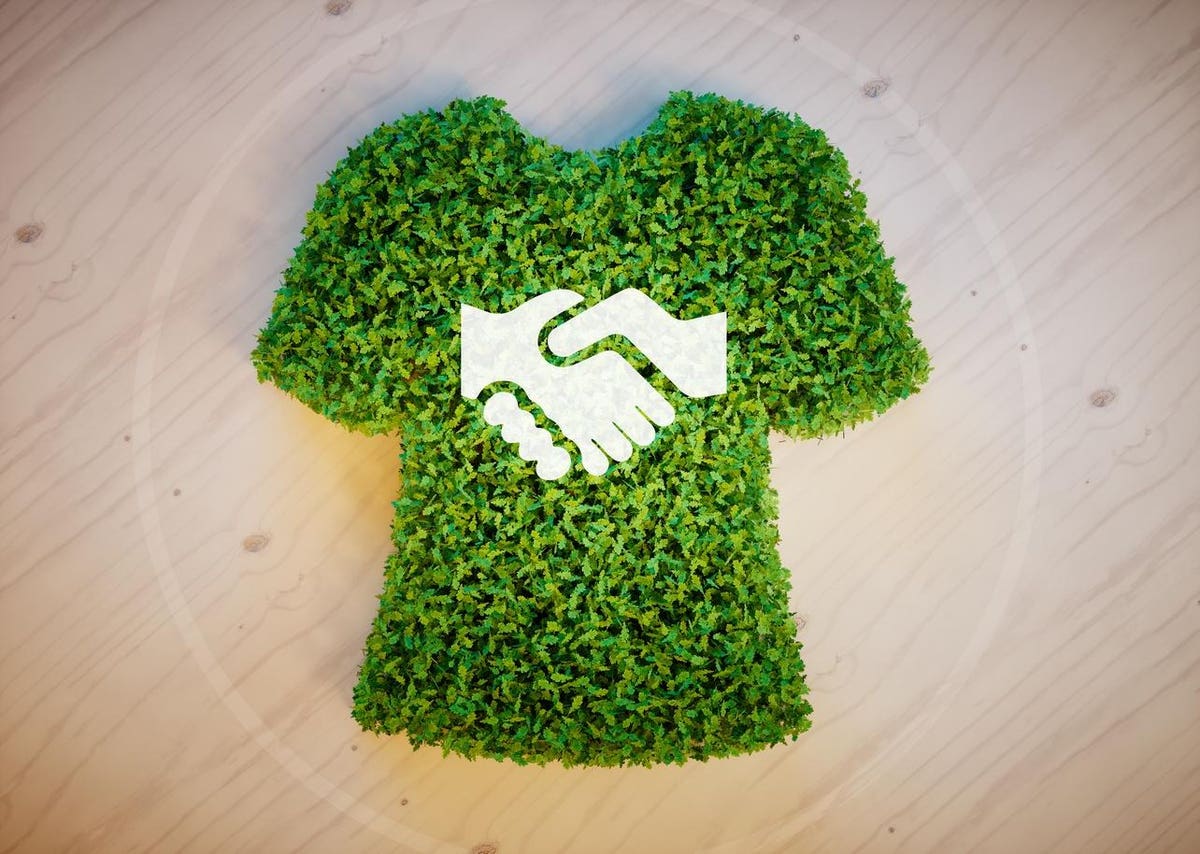Fashion can be an incredibly powerful force for good, capable of shaping culture and leading social change. Today, as the world faces up to a whole range of sustainability challenges, that leadership is needed more than ever.
If brands can make concerted headway on ESG (environmental, social, governance), there’s a huge opportunity to not only secure a healthier future for people and the planet, but also drive innovation and growth.
The good news is that progress is happening. Both collectively and individually, fashion brands have stepped up in areas like supply chain traceability, regenerative agriculture, and more.
Many have also now set sustainability goals. The latest Fashion Industry Charter for Climate Action Progress Report shows that 44% of active signatories have set public climate targets to remain below 1.5°C of global warming. This is almost double the figure (23%) in 2020.
The next stage
We should celebrate these advances. But we must also recognize there’s more to do. The 2023 IPCC report warns there’s a growing risk the world will miss its critical global warming targets unless we accelerate action.
It’s no secret that, compared with other industries, fashion has one of the most complex sustainability journeys out there. Companies are faced with a fragmented landscape of potential solutions, a shifting regulatory landscape, and challenges reporting on efforts and progress.
Focusing on practical next steps, “Scaling ESG Solutions in Fashion” just published by Accenture, Women’s Wear Daily, the Responsible Business Center, and Fashion Makes Change, explores key initiatives, technologies, and practices that can form part of a realistic roadmap.
It identifies 12 priority areas to accelerate fashion sustainability, including high-profile environmental steps in carbon reduction, plastics, water, traceability, and circularity. It also covers broader societal issues such as labor rights, consumer engagement, education and justice, equity, inclusion, and diversity.
The need for collaborative action
The challenges the industry needs to solve are simply too complex and too overwhelming for any one organization to achieve alone. By eliminating carbon emissions across the fashion supply chain, total global carbon emissions could be reduced by up to 8%. That’s more than all international flights and maritime shipping combined.
Key to this is having reliable data to identify the sources of those emissions and report them accurately. And that’s not easy to do because most emissions originate not within fashion companies themselves, but further up the supply chain (what’s known as Scope 3 reporting).
Brands and suppliers will need to collaborate much more closely with each other and share data along the way. This will be essential for identifying ways of eliminating waste, over production, and inefficient movement of goods – all of which are meaningful decarbonization opportunities.
Thinking horizontally
ESG collaboration should be horizontal as well as vertical. In reporting, for instance, it’s increasingly important for brands to contribute to cross-industry standardized reporting methods, such as the GHG Protocol and Science Based Targets initiative (SBTi).
The switch to renewable energy is another area where cross-industry collaboration is having a growing impact. The The Fashion Pact’s ground-breaking Collective Virtual Power Purchase Agreement (CVPPA) is a great example. This is an interesting and ambitious initiative designed to help fashion brands achieve 100% renewable energy use across their entire operations by 2030.
A range of leading brands are involved in the project, which seeks to add over 100,000 megawatt-hours of new renewable electricity to the grid every year. That’s equivalent to taking over 24,000 cars off the road.
Data’s growing role
But it’s very hard to make real progress without the right data and analytical tools. Accenture research found that most organizations are relying on manual or semi-automated processes, and that a lot of work is needed to have reliable data that can be fully integrated into retailer’s and their supplier’s core business systems.
What’s also interesting is that ESG data has an increasingly crucial role beyond reporting. By bringing that data into the heart of the business, fashion brands can integrate it more deeply into all their decision making.
As that happens, the role of ESG itself dramatically expands and deepens. It’s transformed from a reporting requirement into something capable of adding financial value to the business across many parts of the value chain.
Combined with innovations such as AI and advanced modeling through ESG analytics platforms, this data can be used to identify opportunities for innovation and growth in areas like product design, product lifecycle management, inventory management, merchandizing and more.
Helping consumers take control
Consumer engagement and labelling is a great example. We know, that shoppers remain fully committed to sustainability. A huge 83% told Accenture they’ve increased sustainable shopping behaviors in the last 12 months, including buying no more than they need, using their own bags, opting for reusable or refillable products, and so on. In fact, the environment ranks second in the list of consumers’ greatest concerns, behind only the state of the national economy.
On the contrary, a separate Accenture study, “Our Human Moment” cautions that a relevancy gap is emerging between the way organizations think they should encourage people to be sustainable and the way people themselves define, connect, and act sustainability. The gap is so wide, that three in five people don’t strongly relate to the idea of living sustainably.
Therefore, brands must take a broader view to sustainability – as part of a continuous reinvention of the business – and adapt to consumers’ evolving needs and priorities through offering the most relevant brands, products, or services. And if they use accurate ESG data to provide verifiable and standardized consumer labelling, they can help their customers regain some of that control and maintain their own sustainability journeys.
It’s time for greater action
There is now a huge opportunity for fashion to accelerate sustainability by embracing collaboration, leveraging data for innovation, and leading a cultural change across society. By scaling ESG solutions, brands can become part of a regenerative ecosystem that benefits both their business and the planet.
Read the full article here





